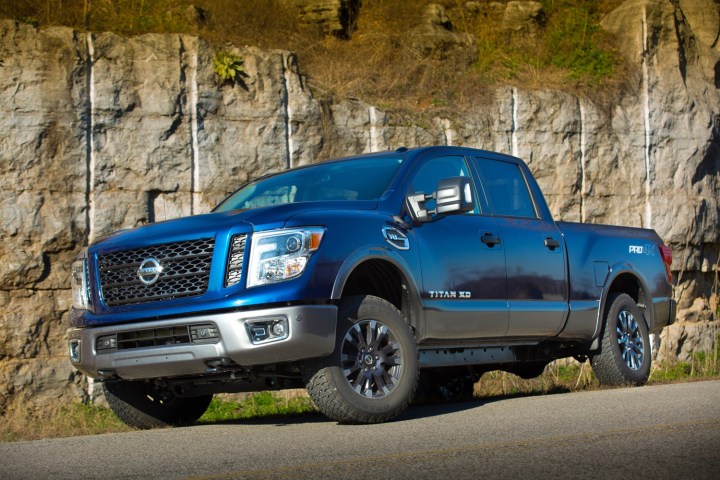
The next one due up is a gasoline V8 version of the XD model. It goes on sale later this spring, priced from $36,485 (including destination), Nissan announced at the 2016 New York Auto Show. Both XD models are meant to offer some of the capability of heavy-duty trucks, but Nissan will also offer a standard Titan that competes more directly with traditional models like the Ford F-150, Chevrolet Silverado, and Ram 1500.
Nissan’s listed base price buys a Titan XD with the 5.6-liter “Endurance” gasoline V8, four-door crew cab body, and rear-wheel drive, in the cheapest S trim level. Midlevel SV and SL models start at $40,255 and $48,225, respectively. A top-of-the-line Platinum Reserve will set you back at least $53,665. Four-wheel drive costs around $3,000, with prices varying slightly by model. And there’s a Pro-4X off-road model with mandatory four-wheel drive that starts at $47,165.
The 5.0-liter Cummins turbodiesel V8 may get most of the attention because it’s unorthodox, but the 5.6-liter Endurance V8 is no slouch. Based on the engine from the old Titan, it produces 390 horsepower and 401 pound-feet of torque. In a typical gasoline versus diesel scenario, the Cummins engine has less horsepower (310) but more torque (555 lb-ft). Comparing base models, the gasoline engine is $5,000 less than the diesel.
In the Titan, the Endurance V8 is mated to a seven-speed automatic transmission. The same engine will also appear in the 2017 Nissan Armada SUV, and in the non-XD Titan, which was unveiled at the 2016 Chicago Auto Show and will also be displayed in New York. That model will also get a V6 engine option at a later date.
One of the major criticisms of the last Titan was a lack of variants and configuration options. With both gasoline and diesel engines, and standard and XD versions, Nissan is off to a good start with the new Titan. It also plans to add different cab and bed options at a later date, meaning there will soon be enough potential combinations to make everyone happy. Maybe.
Editors' Recommendations
- 2020 Nissan Sentra banishes boring styling, as well as its turbocharged engine
- 2020 Nissan Versa sedan redesign brings significant price bump


